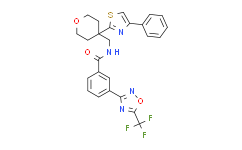
购物车0
产品总数:60954


| 商品编号 | 规格 | 价格 | 会员价 | 是否有货 | 数量 |
|---|---|---|---|---|---|
| PL04803-2mg | 2mg | ¥791.27 | 请登录 |
|
|
| PL04803-5mg | 5mg | ¥1360.00 | 请登录 |
|
|
| PL04803-10mg | 10mg | ¥2101.82 | 请登录 |
|
|
| PL04803-25mg | 25mg | ¥3993.45 | 请登录 |
|
|
| PL04803-50mg | 50mg | ¥6389.53 | 请登录 |
|
|
| PL04803-100mg | 100mg | ¥10223.49 | 请登录 |
|
|
| PL04803-200mg | 200mg | 询价 | 询价 |
|
|
| PL04803-500mg | 500mg | 询价 | 询价 |
|
|
| PL04803-10mM*1mLinDMSO | 10mM*1mLinDMSO | ¥1539.27 | 请登录 |
|
 扫码关注公众号
扫码关注公众号